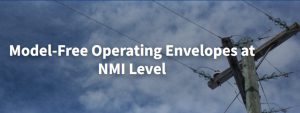
The project recognizes the struggle that distribution companies (who manage the poles and wires) cannot have accurate and up-to-date electrical models of their residential areas, known as low voltage (LV) circuits. Without electrical models, it is hard to do what-if calculations for solar PV, electric vehicles, etc. Accordingly, this project is to capture the physics of three-phase LV circuits and create a model-free approach to calculate voltages.
These model-free calculations can be used to estimate the maximum power exports or imports of individual customers (also known as operating envelopes) as well as to assess the impacts (or hosting capacity) of residential solar PV or electric vehicles.
This 2-year project (Jul 2021 to Jul 2023) is funded by the Centre for New Energy Technologies (C4NET) and involves the Australian distribution companies AusNet Services, Jemena, CitiPower & Powercor, and United Energy. The technology involved in this projects are smart meters, solar PV, high and low voltage distribution networks, machine learning, neural networks and data analytics. The tools utilized in this project are Python, Keras, OpenDSS and GitHub.
From January 2022 to July 2023, this project is scheduled to accomplish different, practical operating envelope algorithms based on different objective functions and the extension of the methodology, as well as potential limitations, to produce a single NN that covers multiple LV circuits at once.